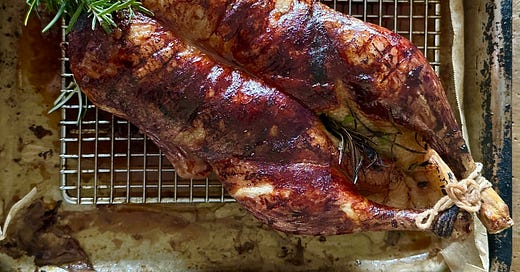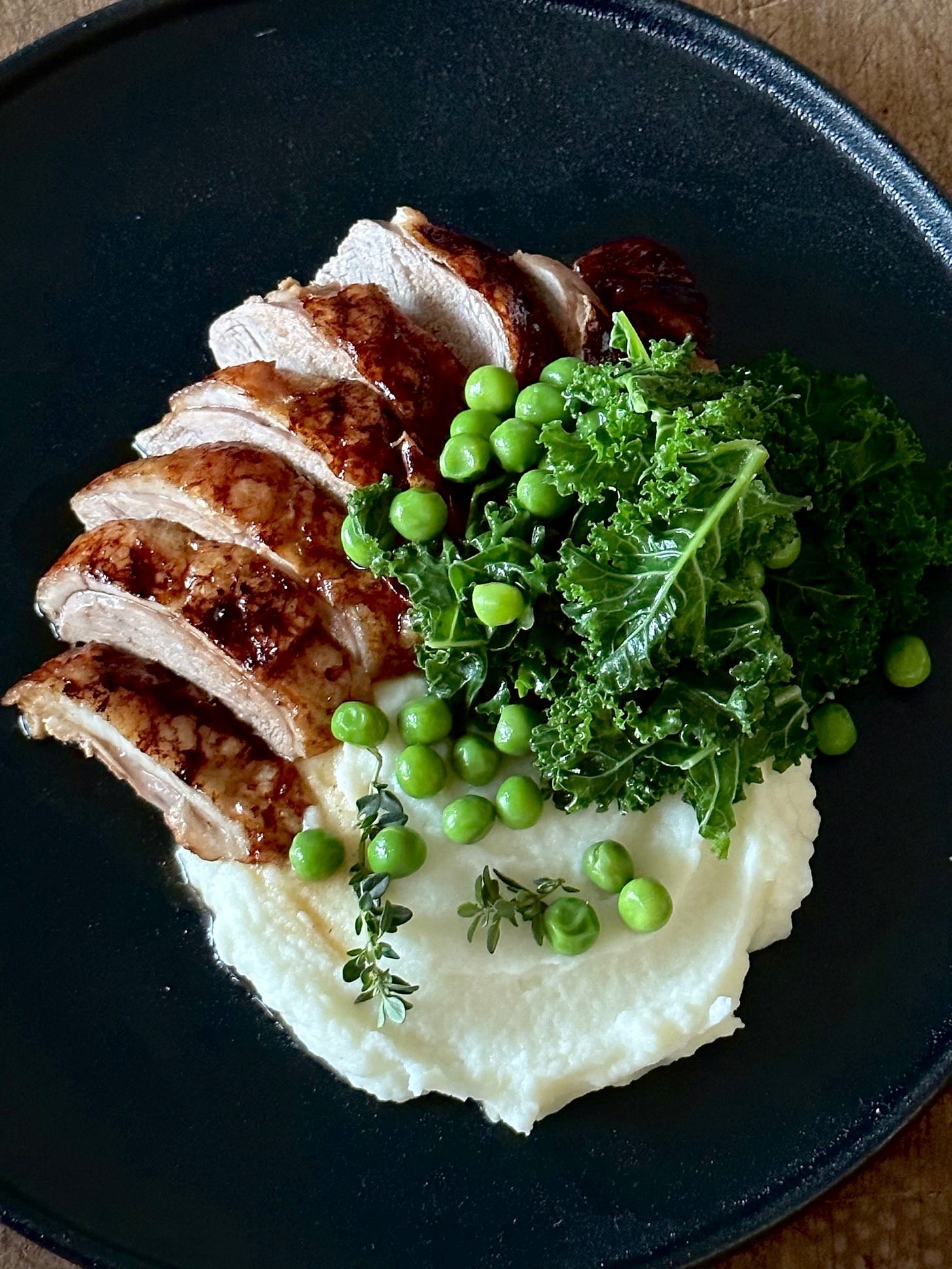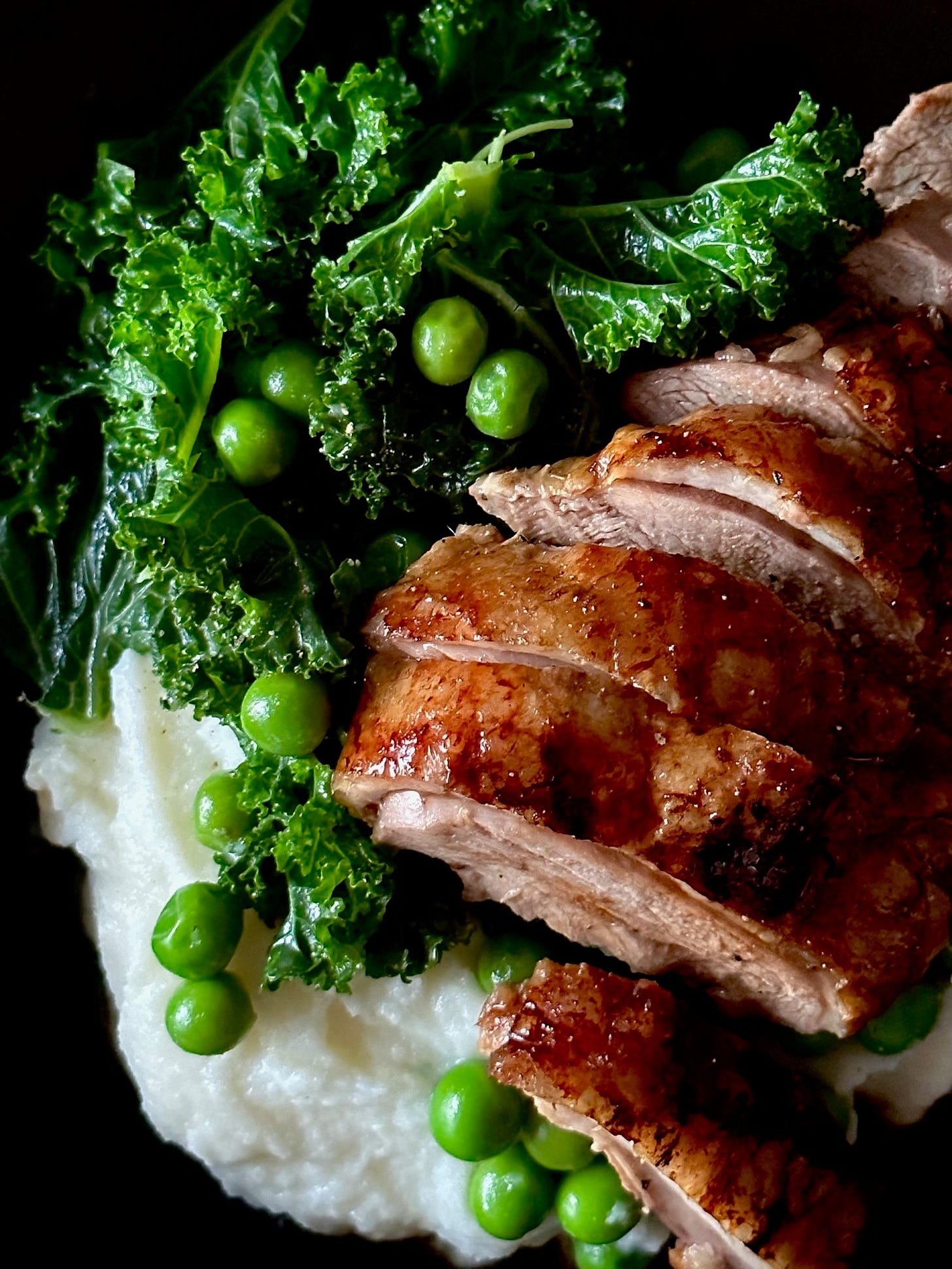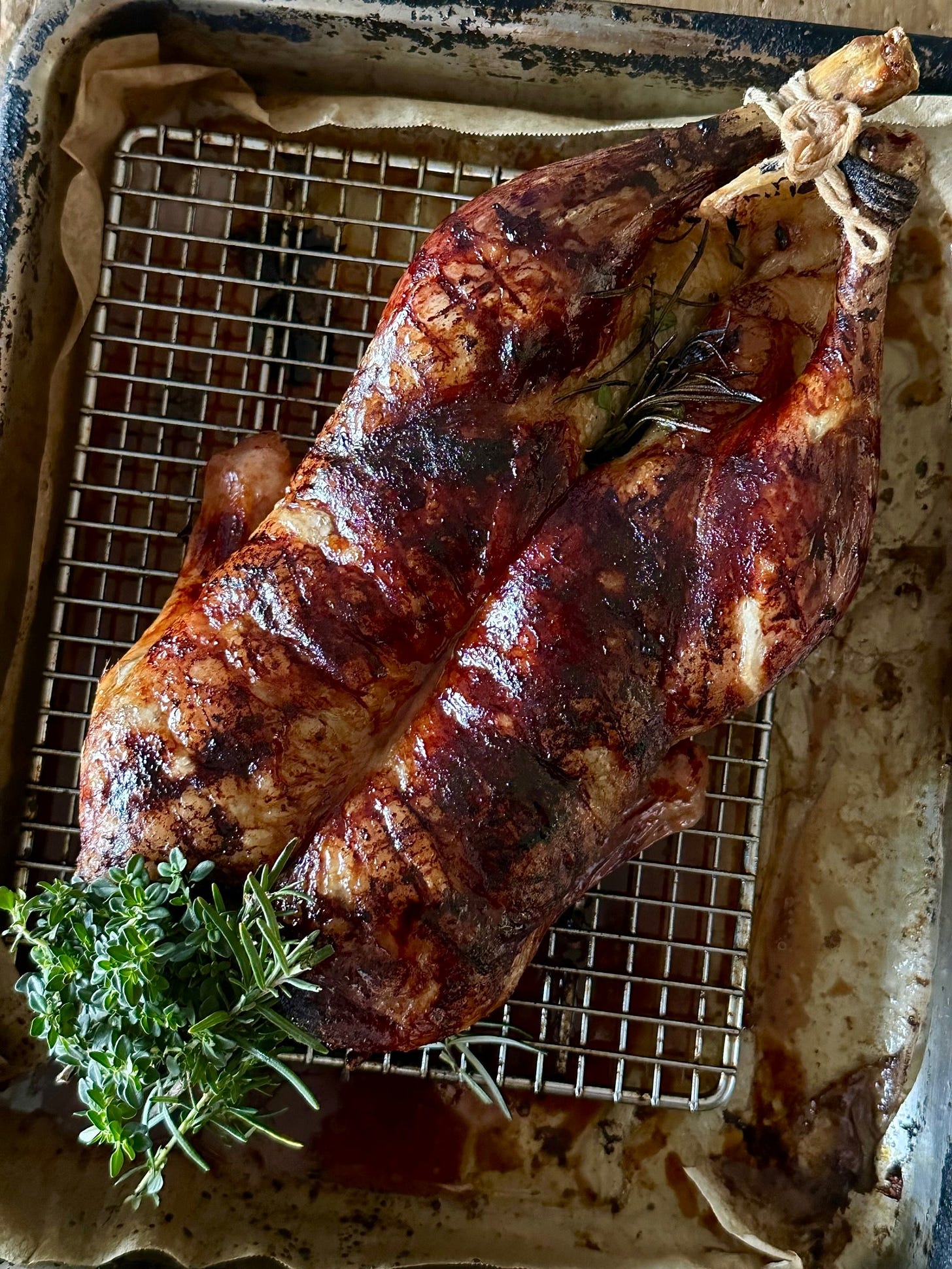We order duck when dining out because a/ we love it and b/ we don’t have to cook it.
But cooking a whole roast duck at home is easier than most people think. You can get that skin burnished brown with a slight tinge of sweetness, and the meat nice and ducky, if you just follow a couple of simple guidelines. (Not rules. Never rules).
First, get rid of the packaging, wipe it dry inside and out with paper towel, and leave it uncovered on a plate in the fridge overnight. This, more than anything else, will help to dry the skin and make it crisp - the holy grail.
Check the cavity and rip out any fat attached, you don’t need more fat in your life. If you have hard winter herbs – thyme, rosemary – stick them in there, for their perfume. If you fancy the idea of duck a l’orange, then a couple of orange slices wouldn’t go astray either.
Then all you need is a hot oven, a rack under the duck, and a bit of water in the pan to absorb the fat as it renders, instead of it splattering your oven. I’ve done a two-ingredient glaze of soy sauce and maple syrup that ensures colour and savouriness.
ROAST DUCK WITH GREENS
1 fresh duck, around 2kg
Sea salt and pepper
3 tbsp soy sauce
1 tbsp maple syrup
Heat oven to 220C (conventional). Chuck some sea salt and pepper into the duck cavity, and any herbs you have handy.
Make it nice. Tuck the wings and the neck under the body. Tie the legs together so they’re not splayed out. Give it form, and dignity.
Prick the skin all over with a bamboo skewer, to help the fat escape as it melts and renders.
Line the roasting tray with baking paper for ease of cleaning. Place the duck breast-side down on a rack in the roasting tray, and pour in water to cover the base but come below the level of the rack.
Roast for 30 minutes, then remove. Whisk the soy and maple syrup together, and lightly brush the skin, then turn the duck over to be breast-side up, and brush all over.
Roast for a further 30 minutes, then baste again with the glaze. Keep an eye on the water level, and add more if needed.
Reduce the heat to 190C and roast for a further 30 minutes or until the duck is browned and a meat thermometer inserted into the thick part of the thigh reads 70C.
Rest the duck for 10 minutes. To carve, cut out the two ‘marylands’ and separate into leg and thigh. Cut along the breastbone and carve off the breast on each side. Slice the breast and serve on warm plates with buttermilk mash and buttered kale and peas. Serves 4.
BUTTERED KALE AND PEAS
600 g kale leaves, stripped from stalks
150 g peas
1 to 2 tbsp butter
Sea salt and pepper
Strip the leaves from the stalks in your hands (grab, hold tight, pull down), and wash.
Drop into a pot of simmering salted water for 1 minute, then add the peas and cook for 1 minute as it returns to the boil.
Drain well, and return to the dry pan. Add butter, sea salt and pepper and toss well.
BUTTERMILK MASH
600 g red-skinned potatoes
1 tbsp butter
200 ml buttermilk
Sea salt and black pepper
Peel the potatoes, cut into quarters and cook in simmering salted water for 20 minutes or until tender.
Drain well and return the potatoes to the dry pan to steam dry for a minute.
Mash until smooth, incorporating butter as you go, then swap to a wooden spoon and beat in the buttermilk, sea salt and pepper. Serve hot.
YOU’RE ROASTING A DUCK. WHAT COULD POSSIBLY GO WRONG?
It could be greasy. Prick the skin to allow the fat to render out.
It could burn. Both soy sauce and maple syrup are capable of catching and over-browning. Turn the pan 180 degrees if it is browning unevenly. Reduce the heat earlier if it browns too quickly.
You could curse me when washing up. Line the pan with baking paper, add a level of water to the pan to absorb the fat as it renders, and it just can’t bake on.
It could be bland and not very ducky. The closer you can get in the food chain to a small-scale duck farmer, the better the duck and the more the flavour; ie through a conscientious butcher or food store, or from such stellar farmers as Tathra Place in NSW or Great Ocean Road Ducks in Victoria. If you’re stuck with a not very ducky duck, make an excellent gravy.
You live on your own and there is no way you want to cook a whole duck. My mum swears by Luv-A-Duck confit duck legs. When she’s cooking for herself, she’ll just roast one for 20 minutes, serve it with something nice, and pour herself a glass of Pinot. Or she’ll shred it and serve it with the mandarin pancakes she keeps in the freezer. I’m pretty sure that’s why she’s made it to 94. Or perhaps it’s the Pinot. I shall take that as a sign.
Thanks for dropping by! Thanks also to Luv-A-Duck for sending me a duck; good to see you’re still Australian-owned and based in Nhill. Their website is a good resource for some interesting duck recipes, btw, if this inspires you to dig deeper.
And special thanks to Terry for turning the left-over roast duck and carcass into a ripper Sichuan hot and sour soup the following night. Do not be at all surprised if this becomes next week’s blog.
I would also like to acknowledge the traditional owners of the lands and waters upon which I work, live, cook and play; the Gadigal people of the Eora Nation. I fully support the Uluru Statement from the Heart, and for an Aboriginal and Torres Strait Islander voice to be enshrined in Australia’s Constitution. It’s only fair, folks.







Brilliant recipe as always, Jill! I LOVE Thursdays! Could I just check - does conventional oven mean don't use fan forced mode? PS Your little love notes to Terry at the end of every post are just SO cute!
Yes, duck and Pinot, but why not try Duck with Pinot Meunier? This latter variety makes wonderful aromatic dry reds when it escapes its usual fate of being used in sparkling whites.